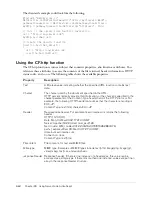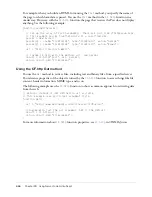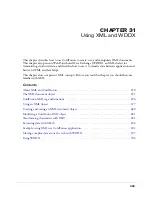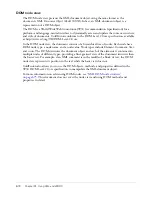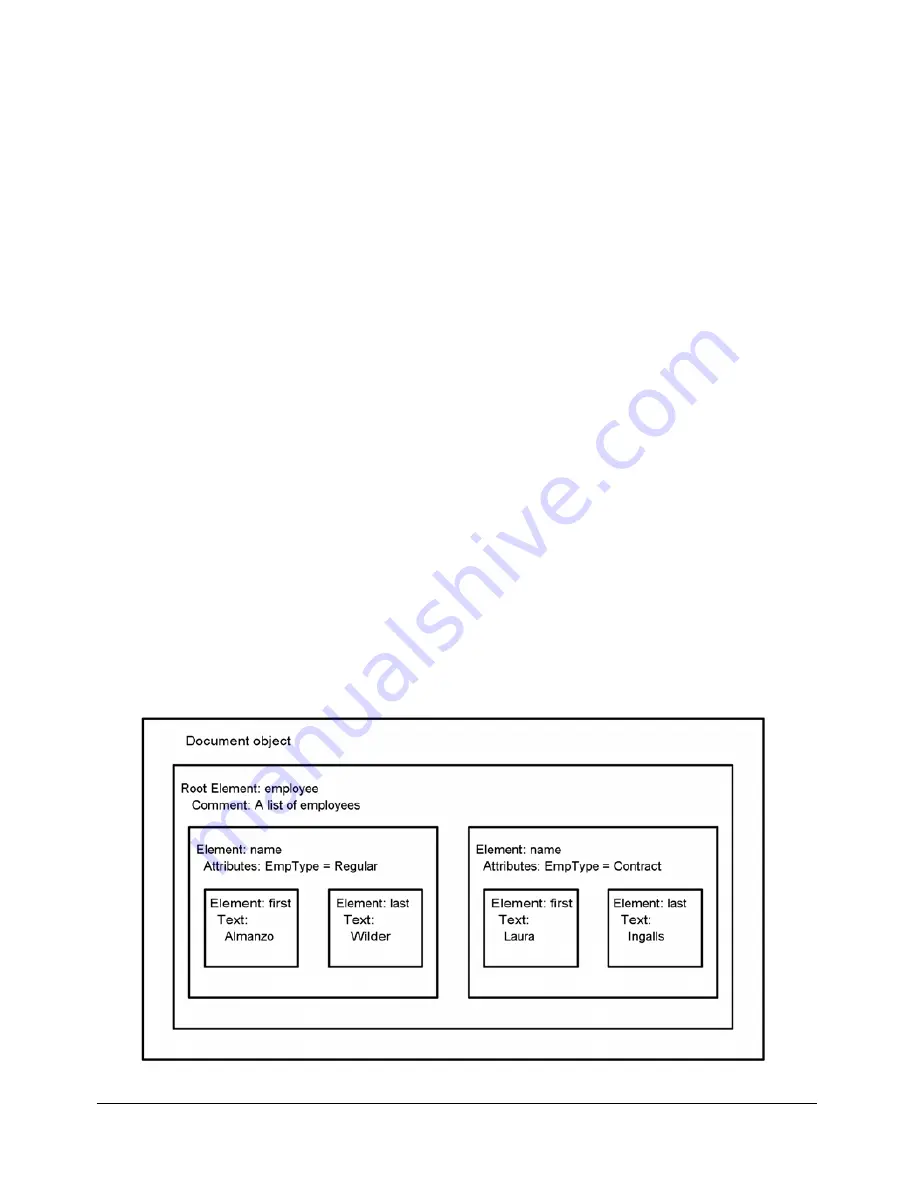
The XML document object
671
The XML document object
ColdFusion represents an XML document as an object, called an
XML document object
,
that is
much like a standard ColdFusion structure. In fact, most ColdFusion structure functions, such as
StructInsert
, work with XML document objects. For a full list of ColdFusion functions that
work on XML document objects, see
“Functions for XML object management” on page 682
.
You can look at the overall structure of an XML document in two ways: a basic view and a DOM
(Document Object Model)-based node view. The basic view presents all the information in the
document, but does not separate the data into as fine-grained units as the node view. ColdFusion
can access XML document contents using either view.
A simple XML document
The next sections describe the basic and node views of the following simple XML document. This
document is used in many of the examples in this chapter.
<?xml version="1.0" encoding="UTF-8"?>
<employee>
<!-- A list of employees -->
<name EmpType="Regular">
<first>Almanzo</first>
<last>Wilder</last>
</name>
<name EmpType="Contract">
<first>Laura</first>
<last>Ingalls</last>
</name>
</employee>
Basic view
The basic view of an XML document object presents the object as a container that holds one root
element structure. The root element can have any number of nested element structures. Each
element structure represents an XML tag (start tag/end tag set) and all its contents; it can contain
additional element structures. A basic view of the simple XML document looks like the following:
Summary of Contents for ColdFusion MX
Page 1: ...Developing ColdFusion MX Applications...
Page 22: ...22 Contents...
Page 38: ......
Page 52: ...52 Chapter 2 Elements of CFML...
Page 162: ......
Page 218: ...218 Chapter 10 Writing and Calling User Defined Functions...
Page 250: ...250 Chapter 11 Building and Using ColdFusion Components...
Page 264: ...264 Chapter 12 Building Custom CFXAPI Tags...
Page 266: ......
Page 314: ...314 Chapter 14 Handling Errors...
Page 344: ...344 Chapter 15 Using Persistent Data and Locking...
Page 349: ...About user security 349...
Page 357: ...Security scenarios 357...
Page 370: ...370 Chapter 16 Securing Applications...
Page 388: ...388 Chapter 17 Developing Globalized Applications...
Page 408: ...408 Chapter 18 Debugging and Troubleshooting Applications...
Page 410: ......
Page 426: ...426 Chapter 19 Introduction to Databases and SQL...
Page 476: ...476 Chapter 22 Using Query of Queries...
Page 534: ...534 Chapter 24 Building a Search Interface...
Page 556: ...556 Chapter 25 Using Verity Search Expressions...
Page 558: ......
Page 582: ...582 Chapter 26 Retrieving and Formatting Data...
Page 668: ......
Page 734: ...734 Chapter 32 Using Web Services...
Page 760: ...760 Chapter 33 Integrating J2EE and Java Elements in CFML Applications...
Page 786: ...786 Chapter 34 Integrating COM and CORBA Objects in CFML Applications...
Page 788: ......








